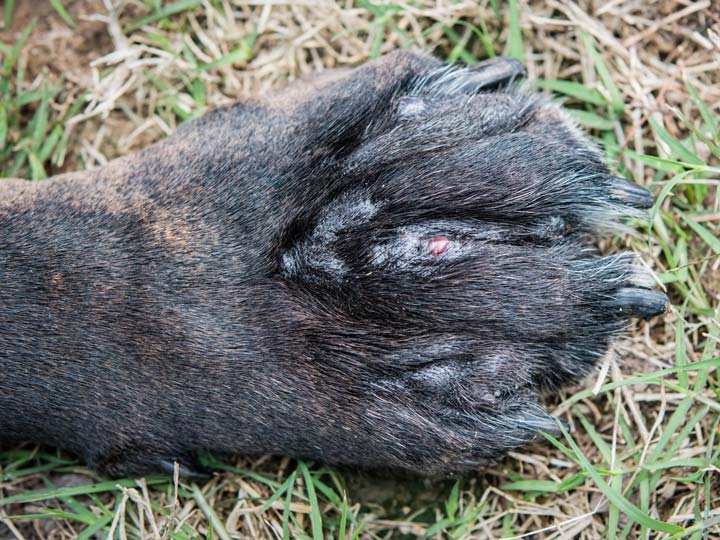Interdigital Cysts in Dogs

Interdigital cysts are bumps filled with blood, serum, or pus that appear between a dog's toes. It's most common to see them on the front paws.
What Causes Interdigital Cysts in Dogs?
Dogs get interdigital cysts from enlarged, plugged hair follicles. Those can result from any injury or inflammation of the skin in the area. The nodules form and then rupture, and that results in even more irritation to the area.
Some of the factors that can lead to interdigital cysts include:
- Dogs with short, coarse hair that may be prone to ingrown hairs.
- Large-breed dogs are heavier, so their increased weight means more contact of the skin between the toes with the ground.
- Overweight dogs that experience more contact of the skin between the toes with the ground.
- Dogs with lameness that puts more pressure on the areas between the toes.
- Dogs with allergies or other conditions that make them lick or chew their paws extensively.
- Dogs that get a paw injury.
Signs of Interdigital Cysts in Dogs
An interdigital cyst looks like a bubble or bump between a dog's toes. The dog may limp on that paw. Also, the dog may lick or chew at the cysts.
Diagnosis of Interdigital Cysts in Dogs
A veterinarian may do skin cytology or even a biopsy of the skin in the area of the interdigital cyst to diagnose it. That's because other conditions can cause similar-looking bumps on the skin, including cancer and mange (demodicosis).
Treatment of Interdigital Cysts in Dogs
The underlying cause of the cysts must be addressed and treated to dissuade them long-term. That diagnosis could require multiple steps and may include biopsy, food trial, allergy testing, skin scraping, and fungal culture.
Additionally, any secondary infection going on will need antibiotics. A skin culture and sensitivity test can determine what type of bacteria are involved and which antibiotic will be effective against them.
Sometimes, topical antibiotics, anti-inflammatories, or shampoo can help.
Surgery may be necessary. Oral anti-inflammatory medications may also help.
The dog may need to wear an E-collar or protective booties to keep his tongue and teeth away from the area.
Disclaimer: This website is not intended to replace professional consultation, diagnosis, or treatment by a licensed veterinarian. If you require any veterinary related advice, contact your veterinarian promptly. Information at DogHealth.com is exclusively of a general reference nature. Do not disregard veterinary advice or delay treatment as a result of accessing information at this site. Just Answer is an external service not affiliated with DogHealth.com.
Notice: Ask-a-Vet is an affiliated service for those who wish to speak with a veterinary professional about their pet's specific condition. Initially, a bot will ask questions to determine the general nature of your concern. Then, you will be transferred to a human. There is a charge for the service if you choose to connect to a veterinarian. Ask-a-Vet is not manned by the staff or owners of DogHealth.com, and the advice given should not delay or replace a visit to your veterinarian.


